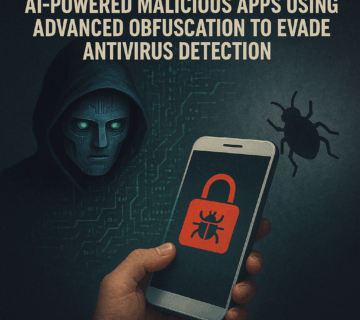Russian Botnet Exploits DNS Vulnerabilities to Launch Devastating Global Cyber Campaign
🎙️ Dive Deeper with Our Podcast!
Russian Botnet Weaponizes MikroTik and DNS Vulnerabilities
👉 Listen to the Episode: https://technijian.com/podcast/russian-botnet-weaponizes-mikrotik-and-dns-vulnerabilities/
In a shocking revelation that has sent ripples through the cybersecurity community, researchers have uncovered a massive Russian botnet operation that weaponized simple DNS configuration errors to orchestrate one of the most sophisticated cyber attacks seen in recent years. This discovery highlights how seemingly minor technical oversights can be exploited to create devastating security breaches with global implications.
The Genesis of a Digital Nightmare
The story begins in November 2024 when cybersecurity experts stumbled upon what initially appeared to be a routine malspam campaign. However, deeper investigation revealed something far more sinister – a meticulously orchestrated operation Russian Botnet DNS Vulnerabilities Exploit that combined compromised network infrastructure with DNS manipulation to create a nearly perfect storm of cyber warfare.
The attackers began their assault by impersonating DHL Express, sending fraudulent shipping invoices to unsuspecting victims worldwide. These seemingly legitimate emails contained ZIP files that, when opened, unleashed obfuscated JavaScript code designed to execute PowerShell scripts. These scripts established covert connections to a command and control server operating from IP address 62.133.60.137, traced back to Russian threat actors using Global Connectivity Solutions network infrastructure.
MikroTik Router Army: The Backbone of Digital Chaos
What makes this attack particularly devastating is its foundation built on approximately 13,000 hijacked MikroTik routers transformed into a coordinated botnet. These compromised devices, spanning multiple firmware versions including the most recent releases, suggest that attackers are exploiting both known vulnerabilities and potentially undiscovered zero-day exploits.
The cybercriminals converted these routers into SOCKS4 proxies, effectively creating an anonymous relay system that masks the true origins of malicious traffic. This transformation provides several strategic advantages for the threat actors, including complete anonymity, global reach, and the ability to route traffic from tens or hundreds of thousands of additional compromised machines through these proxy nodes.
The botnet’s architecture demonstrates remarkable sophistication in its design and implementation. Each compromised router serves as a node in a vast network that can support various malicious activities, from distributed denial-of-service attacks to data exfiltration, credential stuffing operations, and widespread malware distribution campaigns.
The compromise methodology likely involves exploiting buffer overflow vulnerabilities in MikroTik routers, with attackers specifically targeting devices that retain default administrative credentials. Many of these routers historically shipped with hardcoded admin accounts using blank passwords, creating persistent security vulnerabilities that remain exploitable even after firmware updates.
The DNS Deception: 20,000 Domains Turned Against Their Owners
Perhaps the most ingenious aspect of this campaign involves the exploitation of misconfigured Sender Policy Framework records across approximately 20,000 legitimate domains. While these organizations believed they had implemented proper email security through SPF protections, critical configuration errors rendered these safeguards completely ineffective.
The fundamental flaw lies in the use of permissive “+all” flags instead of the secure “-all” or “~all” options in their SPF records. This seemingly minor difference had catastrophic consequences, essentially authorizing any server worldwide to send emails on behalf of these domains, completely defeating SPF’s anti-spoofing purpose.
Properly configured SPF records should specify authorized mail servers and explicitly deny unauthorized senders using syntax such as “v=spf1 include:example.com -all”. However, the compromised domains used “v=spf1 include:example.com +all”, which permits any server to send spoofed emails that appear completely legitimate to recipient mail servers.
This configuration vulnerability may result from accidental administrative errors or malicious modifications by threat actors who gained access to registrar accounts. Regardless of the origin, the consequence enables massive email spoofing operations that bypass traditional anti-spam protections and dramatically increase malicious payload delivery success rates.
Global Impact and Ongoing Threat Landscape
The scale and sophistication of this operation represent a significant evolution in botnet capabilities and threat actor methodologies. The combination of compromised router infrastructure and DNS misconfigurations created ideal conditions for large-scale malware distribution with minimal detection probability.
The global distribution of the botnet provides extensive geographical coverage, making it extremely difficult for law enforcement agencies to coordinate effective takedown operations. The open relay accessibility of the infrastructure also means that third-party threat actors can potentially leverage this network for their own malicious activities, exponentially increasing the overall threat landscape.
This campaign demonstrates how modern cybercriminals are becoming increasingly sophisticated in their approach, combining multiple attack vectors to create compound threats that are more difficult to detect, mitigate, and attribute. The ongoing nature of this threat requires sustained vigilance from the cybersecurity community, as the identified botnet infrastructure remains capable of supporting various malicious activities beyond the observed malspam campaigns.
Critical Defense Strategies and Immediate Actions
Organizations worldwide must take immediate action to protect themselves against this and similar threats. The first priority should be conducting comprehensive audits of DNS SPF records to ensure proper configuration. This involves verifying that all SPF records use restrictive flags and accurately specify authorized mail servers.
Network administrators should implement regular security assessments of internet-facing equipment, particularly routers and network infrastructure devices. This includes changing default credentials, implementing strong authentication mechanisms, and ensuring all firmware is updated to the latest versions with security patches applied.
Email security systems require enhanced configuration to detect and block suspicious messages, even those that appear to come from legitimate domains. Organizations should implement multi-layered email security solutions that don’t rely solely on SPF records for authentication verification.
Monitoring and logging systems need enhancement to detect unusual network traffic patterns that might indicate compromise or unauthorized proxy usage. This includes implementing network segmentation to limit the potential impact of compromised devices and establishing baseline network behavior patterns to identify anomalies.
Regular security awareness training for employees becomes crucial, particularly focusing on identifying sophisticated phishing attempts and social engineering tactics. Staff should be educated about the dangers of opening unexpected email attachments and the importance of verifying sender authenticity through alternative communication channels.
Frequently Asked Questions
What is an SPF record and why is proper configuration crucial? An SPF (Sender Policy Framework) record is a DNS record that specifies which mail servers are authorized to send emails on behalf of a domain. Proper configuration using “-all” or “~all” flags prevents unauthorized servers from spoofing your domain, while misconfigured “+all” flags allow anyone to send emails appearing to come from your domain.
How can I check if my domain’s SPF record is properly configured? You can check your SPF record by using online SPF lookup tools or running a DNS query for TXT records on your domain. Look for records starting with “v=spf1” and ensure they end with “-all” or “~all” rather than “+all”. If you’re unsure, consult with your IT security team or a cybersecurity professional.
What makes MikroTik routers particularly vulnerable to this type of attack? MikroTik routers have historically shipped with default credentials and contain various software vulnerabilities that can be exploited. Many organizations fail to change default passwords or update firmware regularly, making these devices attractive targets for botnet operators seeking to create proxy networks.
How can I determine if my router has been compromised? Signs of router compromise include unusual network traffic, slow internet performance, unexpected configuration changes, unknown user accounts, or connections to suspicious IP addresses. Regularly monitor router logs and implement network monitoring tools to detect anomalous activity.
What should I do if I suspect my organization has been targeted by this campaign? Immediately disconnect suspected compromised devices from the network, change all administrative passwords, update firmware on all network devices, conduct a comprehensive security audit, review email logs for suspicious activity, and consider engaging cybersecurity professionals for incident response assistance.
How effective are traditional email security solutions against this type of attack? Traditional email security solutions that rely primarily on SPF records are ineffective against this attack due to the DNS misconfigurations. Multi-layered security approaches incorporating behavioral analysis, sandboxing, and advanced threat detection are more effective against sophisticated campaigns like this.
What role do DNS providers play in preventing these attacks? DNS providers can implement validation checks to warn users about potentially dangerous SPF configurations, provide security monitoring services to detect unusual DNS query patterns, offer DNS security services like DNS filtering and threat intelligence integration, and maintain updated security practices to prevent registrar account compromises.
How Technijian Can Fortify Your Digital Defenses
In an era where cyber threats are becoming increasingly sophisticated and pervasive, partnering with experienced cybersecurity professionals has never been more critical. Technijian offers comprehensive cybersecurity solutions specifically designed to protect organizations against advanced threats like the Russian botnet campaign and similar sophisticated attacks.
Our expert team provides thorough DNS security audits to identify and remediate misconfigurations that could expose your organization to spoofing attacks. We implement advanced email security solutions that go beyond traditional SPF-based filtering, incorporating behavioral analysis, machine learning, and threat intelligence to detect even the most sophisticated phishing attempts.
Technijian’s network security specialists conduct comprehensive infrastructure assessments to identify vulnerable devices and implement robust security configurations. Our managed security services provide 24/7 monitoring and rapid incident response capabilities, ensuring that potential threats are detected and neutralized before they can cause significant damage.
We also offer specialized training programs to educate your staff about emerging cyber threats and best practices for maintaining digital security. Our approach combines technical solutions with human awareness to create a comprehensive defense strategy that addresses both technological vulnerabilities and human factors in cybersecurity.
Through proactive security management, continuous monitoring, and rapid response capabilities, Technijian helps organizations stay ahead of evolving cyber threats and maintain robust security postures in an increasingly dangerous digital landscape. Contact us today to learn how we can protect your organization from sophisticated cyber attacks and ensure your digital infrastructure remains secure and resilient.
About Technijian
Technijian is a premier managed IT services provider, committed to delivering innovative technology solutions that empower businesses across Southern California. Headquartered in Irvine, we offer robust IT support and comprehensive managed IT services tailored to meet the unique needs of organizations of all sizes. Our expertise spans key cities like Aliso Viejo, Anaheim, Brea, Buena Park, Costa Mesa, Cypress, Dana Point, Fountain Valley, Fullerton, Garden Grove, and many more. Our focus is on creating secure, scalable, and streamlined IT environments that drive operational success.
As a trusted IT partner, we prioritize aligning technology with business objectives through personalized IT consulting services. Our extensive expertise covers IT infrastructure management, IT outsourcing, and proactive cybersecurity solutions. From managed IT services in Anaheim to dynamic IT support in Laguna Beach, Mission Viejo, and San Clemente, we work tirelessly to ensure our clients can focus on business growth while we manage their technology needs efficiently.
At Technijian, we provide a suite of flexible IT solutions designed to enhance performance, protect sensitive data, and strengthen cybersecurity. Our services include cloud computing, network management, IT systems management, and disaster recovery planning. We extend our dedicated support across Orange, Rancho Santa Margarita, Santa Ana, and Westminster, ensuring businesses stay adaptable and future-ready in a rapidly evolving digital landscape.
Our proactive approach to IT management also includes help desk support, cybersecurity services, and customized IT consulting for a wide range of industries. We proudly serve businesses in Laguna Hills, Newport Beach, Tustin, Huntington Beach, and Yorba Linda. Our expertise in IT infrastructure services, cloud solutions, and system management makes us the go-to technology partner for businesses seeking reliability and growth.
Partnering with Technijian means gaining a strategic ally dedicated to optimizing your IT infrastructure. Experience the Technijian Advantage with our innovative IT support services, expert IT consulting, and reliable managed IT services in Irvine. We proudly serve clients across Irvine, Orange County, and the wider Southern California region, helping businesses stay secure, efficient, and competitive in today’s digital-first world.





